Buying a light bulb can be complicated. If you don't take the time to figure out what type of bulb you need, it may not match the color of the other bulbs in the room or even work in your fixture. I've been guiding friends and family through their bulb-buying for years, and there are six critical factors to consider before you make your next purchase. Follow my guide, and you'll end up with the right bulb every time.
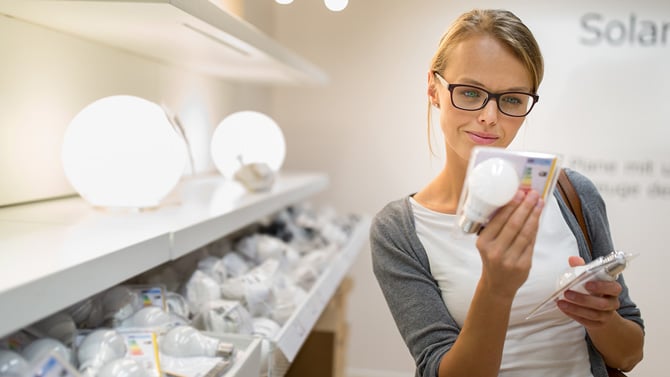
1. Check your bulb base size and bulb shape
Light bulbs come in a variety of sizes and shapes, depending on where you're using them. The standard light bulb used in U.S. households is an A19 bulb with an E26 base. The E means that the bulb has an Edison Screw, and the 26 means the base is 26mm across (in Europe, you'll find E27 bulbs). The A refers to the bulb shape. A is for arbitrary and is the shape that we all think of when we envision a light bulb (C is for candle, G is for Globe, etc.) The number 19 designates the size. Bulbs.com has a great light bulb shape chart for reference. The site also has a handy light bulb base chart.
2. Determine how much light you need
Wattage is no longer the best way to determine which bulb will be a direct replacement for the bulb that just burned out. LED bulbs use a lot fewer watts than incandescents to produce the same level of light. Instead of watts, look for the number of lumens, the measure of how much light a bulb produces rather than how much energy it uses. You'll usually also see a "watt equivalent" on the box of most LED bulbs to help guide you.
Here's a cheat sheet for replacing incandescent bulbs with an equivalent LED:
- If you're replacing a 100-watt bulb, look for a bulb with 1600 lumens.
- If you're replacing a 75-watt bulb, look for a bulb with 1100 lumens.
- If you're replacing a 60-watt bulb, look for a bulb with 800 lumens.
- If you're replacing a 40-watt bulb, look for a bulb with 450 lumens.
The fixtures in your home will have a rating for the maximum watts they are capable of safely handling. If you buy an energy-saving bulb and want a brighter light, you can buy a bulb that delivers more lumens and still stays safely within the maximum wattage allowed. For instance, a 9-watt LED bulb delivers the same amount of light as a 60-watt incandescent bulb. So you could safely move up to a 15-watt LED bulb, which would deliver the same amount of light as a 100-watt incandescent bulb.
3. Select the right color of white for your light bulb
White light bulbs have a color cast. They can be the warm, yellow light of the traditional incandescent light bulb, the cool, blue light of daylight, or somewhere in between. Manufacturers like to use terms like "soft," "warm," or "daylight." Unfortunately, these terms aren't standard across manufacturers. To determine the direct color replacement, you should look at the color temperature, which is measured in degrees Kelvin. Here's how:
- 2700 - 2800K: Warm, yellow light
- 3000 - 3200K: Still slightly yellow, warm light
- 3500 - 4000K: A neutral, bright white light
- 5000 - 6500K: A slightly bluish, bright white light
Smart LED lights can change their color across the spectrum of white light (and some can produce a wide range of colors as well). These may be useful for you as different color variants may work better for specific tasks – for example, you might want a bright, blue-tinged white light in the morning or for better contrast while reading, but enjoy a warmer light at bedtime. Blue light has been shown to interfere with sleep, which is another advantage of being able to adjust your lights to warmer tones at night.
Finally, not all light bulbs accurately show an object's true colors. Color accuracy is measured on the color rendering index (CRI) on a scale from zero to 100. Incandescent and halogen bulbs have a perfect CRI of 100. A compact fluorescent or LED bulb with a CRI of 80 is considered good, and over 90 is regarded as excellent.
4. Find out if you need to dim your light
Not all light bulbs can be dimmed or used in 3-way fixtures, especially compact fluorescent and LED bulbs. The packaging should specifically say that the bulb is "dimmable" or "3-way" so you to know that the bulb will indeed work with your dimmer or 3-way fixture.
5. Find out if your light bulb will be used in an enclosed fixture or recessed can
Light bulbs that are used in enclosed or recessed fixtures heat up more than if they're used in open fixtures. LED bulbs are especially sensitive to heat and won't last as long if used in these types of fixtures. If you want your LED bulb to last longer, look for a bulb rated for use in an enclosed fixture. You can find enclosed-fixture-rated LED bulbs on Amazon.
Read more: How to Make LED Bulbs Last Longer
6. Choose the right type of light bulb
When you're buying new bulbs – no matter the type – you'll want to look for the Energy Star label. Energy Star-certified light bulbs are tested to meet energy efficiency standards, and the label will tell you exactly what you're buying. The Energy Star label will show the bulb's brightness (in lumens), color (i.e., color temperature), lifespan, energy usage, and what it will cost to run it for a year. This information makes it easy to compare bulbs, especially if you're considering bulbs of different types.
As of August 1, 2023, standard A19 halogen light bulbs – not specialty bulbs or those that light your appliances – are no longer being produced for the U.S. market. While you may still find them for sale, the supply is running out.
There are three types of energy-saving bulbs on store shelves:
Energy-saving incandescents (halogen)
These lower-wattage incandescent bulbs have a tungsten filament like standard bulbs but are surrounded by a halogen gas, rather than argon or nitrogen, which provides bright light with better efficiency. These are 25% more efficient than traditional incandescent bulbs and will last three times as long. Prices start around $1.25 per halogen bulb (750 lumens) if you're willing to buy in bulk. Otherwise, halogen bulbs are pricey, averaging around $5-6 per bulb.
Compact fluorescents (CFLs)
The iconic curly-shaped CFL bulbs used to be the inexpensive choice for an energy-efficient bulb. They've come a long way, now available in a range of color temperatures, and some are even styled to look like traditional incandescent bulbs. However, they've been surpassed by LED bulbs. LEDs are slightly more energy efficient (75-80% versus CFL's 75%) and are now often less expensive than CLFs. Prices start around $3 per CLF bulb (850 lumens).
LEDs
The most efficient option, LED bulbs are 75-80% more efficient than traditional incandescent bulbs and last up to 25 times longer. Prices start at just under $2 per LED bulb (800 lumens), though the less expensive bulbs tend to be rated at 7-10 years, not 20. Look for the "average life" in hours for a true comparison between bulbs. I've seen some as low as 7,700 hours.
Smart bulbs
Smart bulbs are LED bulbs that can connect to WiFi or Bluetooth, so you can control them from your smart assistant (Amazon Alexa, Google Assistant, or Siri) or a smartphone app. While the functionality is a bit different for each bulb, you can typically tell them to turn on or off at different times and turn them on or off from afar. Some bulbs will even have the option to control the light color. Prices start at $3-$6 per smart bulb (800 lumens), depending on whether they need a hub or have WiFi or Bluetooth built-in.
Energy cost comparison
Here's what each type of bulb producing 800 lumens will cost to operate over 20 years, estimating 3 hours of use per day at $0.11 per kilowatt hour.
| Bulb Type | Halogen | Compact Fluorescent | LED bulb | LED Smart Bulb |
| Bulb cost | $1.25/ea | $2.75/ea | $1.42/ea | $6.00/ea |
| Watts | 43 watts | 13 watts | 8.5 watts | 9 watts |
| Energy use | $6.38/yr | $1.57/yr | $1.02/yr | $1.08/yr |
| Lifespan | 1,000 hours | 10,000 hours | 11,000 hours | 25,000 hours |
| Cost over 20 years | $140.68 | $39.65 | $21.82 | $27.60 |
As you can see, with the price of LED bulbs so low, it doesn't make sense to bother buying older, less efficient bulbs. Even with the higher up-front price of smart LED bulbs, the energy savings over the bulb's life can be substantial.
Updated on 8/1/2024 with halogen light bulb phase-out, new tips, and new products.
[Image credit: buying a light bulb via BigStockPhoto]
For the past 20+ years, Techlicious founder Suzanne Kantra has been exploring and writing about the world’s most exciting and important science and technology issues. Prior to Techlicious, Suzanne was the Technology Editor for Martha Stewart Living Omnimedia and the Senior Technology Editor for Popular Science. Suzanne has been featured on CNN, CBS, and NBC.

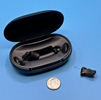

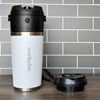





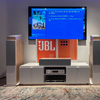
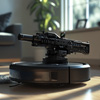
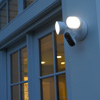



From riley smith on March 13, 2018 :: 8:28 pm
I didn’t know that LED lights are able to last 25 times longer than other bulbs. My wife just bought a new lamp and we have no idea what type of lightbulbs to use. It would be nice to try LEDs because then we wouldn’t have to replace them as often.
Reply